
|
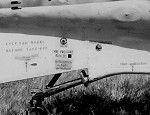
|
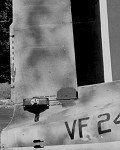
|
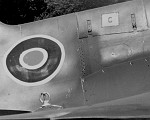
|
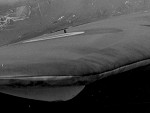
|

|
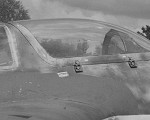
|
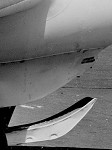
|
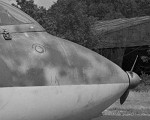
|
RAF Komet VF241 was flown by the RAE between 1945 and 1947 as as a glider, towed by a Spitfire, usually from Wisley. Other airfields involved were Farnborough and Wittering. Wisley is discussed below.
File 'AVIA 6/10072' in The National Archives (formerly Public Records Office) contains a summary of the flight tests. A summary of the contents is listed here.
The Komet was first flown by the RAE in 1945, but owing to considerable maintenance difficulties, especially with the hydraulic system, the tests were not completed until November, 1947. The first flight with instrumentation was made in February, 1946. During all these tests a Spitfire IX was used to tow the aircraft. All flights were made from Wisley or Wittering airfields since it was necessary to use a grass runway to land on the skid type undercarriage. During the flights by the RAE the rocket unit was removed and an auto-observer installed in its place. The weight was about 3800 lbs. The CG was adjusted by means of ballast over a range of 0.21c to 0.24c.
The programme of tests made covered pilot's assesment of handling characteristics in towed and free flight, static stick fixed stability measurements, static lateral stability measurements, stalling behaviour including measurement of stalling speeds with trailing static [bomb] and a series of fast landings to determine the ease of approach and landing on an aircraft of this type. During a high speed landing (at 158 mph EAS, more than double the stall speed) the skid system collapsed completely and the programme was wound up since the aircraft was beyond repair.
No details are available of the subsequent history.
One of the photos shown in Eric Brown's 'Wings of the Luftwaffe' is presented here in much greater detail. It clearly shows the original German stencils and the English translations. The Iron Cross on the rear fuselage is showing through the RAF roundel painted over it. The wing plus wing root fairing and the vertical tail are overpainted in what appears to be a single color, and the lower side is overpainted in a light color. This is often represented as yellow in drawings, but this color is not confirmed yet. The detail view of the rear fuselage shows that you can see trough the cooling slots, confirming that no engine was installed in VF241. The photo is dated 7 July 1945.

|

|

|

|

|

|

|

|

|
Wisley airfield was acquired by Vickers-Armstong in 1943. It was used for military purposes until 1945 and as aeroplanes became larger and needed longer runways it was used for final assembly and test flying of the new generation of turbo-prop and jet military aircraft and airliners. For example, most of the Valiants first took to the air from Wisley. Many prototypes were tested here. The maiden flight of VC 10 prototype G-ARTA took it from Brooklands to Wisley, where the aircraft was flight tested. The BAC 1-11 was also tested here. Currently the concrete runway still exists, but an armco barrier was built across it, roughly in the middle. All buildings in the north-west corner have been demolished. A good aerial view can be found on the MultiMap site. There are development plans for the west half of the site (housing), but local residents have stopped earlier development programs. Another plan was to build a large waste incinerator, but this too was stopped by locals.
Most of the Komet test flights were conducted from Wisley airfield. Kevin Blacktop researched the airfield, and provided the following data and photos. The airfield was used from 1943 to 1973. Initially it had a grass runway (as during Komet tests), but at some stage it received a concrete runway. A noteworthy point in photo identification is that there is a slight incline from the buildings area (in the north-west corner) up to the runway. It could be that most photos of VF241 were made at Wisley. For example, the fourth photo of VF241 in Captain Eric Brown's book 'Wings of the Luftwaffe' (page 171, showing it from the rear) clearly has a sloping background. The local area has a wood in roughly the same direction and to the left which is also apparent. The other three photos also appear to be taken at the same place.
Paul Robinson reports that a small MSN site was started on the subject of the old airfield, and the site even shows a book(let) about Wisley airfield.

|
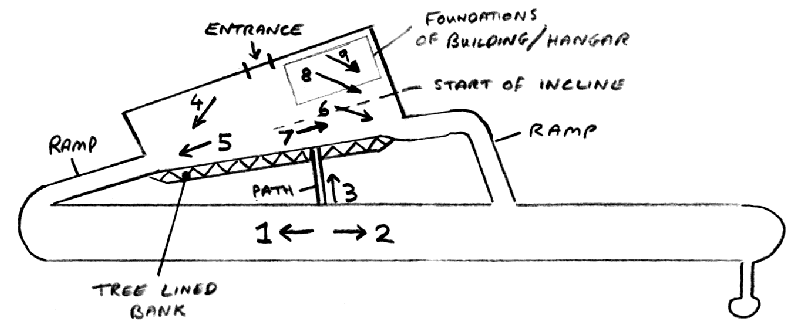
| 1 | 
| 4 | 
| 7 | 
| ||
| 2 | 
| 5 | 
| 8 | 
| ||
| 3 | 
| 6 | 
| 9 | 
|